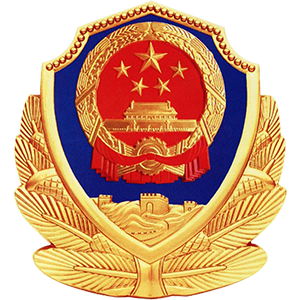| [1] |
Yu M Z,Lin J Z,Chen L H.Large eddy simulation of a planar jet flow with nanoparticle coagulation[J].Acta Mechanica Sinica,2006,22(4):293-300. doi: 10.1007/s10409-006-0011-z
|
| [2] |
Miller S E, Garrick S C.Nanoparticle coagulation in a planar jet[J].Aerosol Sci Technol,2004,38(1):79-89. doi: 10.1080/02786820490247669
|
| [3] |
Garrick S C, Lehtinen K E J,Zachariah M R.Nanoparticle coagulation via a Navier-Stokes/nodal methodology: evolution of the particle field[J].J Aerosol Sci,2006,37(5):555-576. doi: 10.1016/j.jaerosci.2005.04.010
|
| [4] |
Lin J Z, Chan T L,Liu S,et al.Effects of coherent structures on nanoparticle coagulation and dispersion in a round jet[J].Internat J Nonlinear Sci Numer Simul,2007,8(1):45-54.
|
| [5] |
Smoluchowski V.Versuch einer mathematischen theorie der Koagulationskinetik kollider losungen[J].Z Phys Chem,1917,92:129-168.
|
| [6] |
Frenklach M.Dynamics of discrete distribution for smoluchowski coagulation model[J].J Colloid Interface Sci,1985,108(1):237-242. doi: 10.1016/0021-9797(85)90256-5
|
| [7] |
Hulbert H M, Katz S.Some problems in particle technology: a statistical mechanical formulation[J].Chem Eng Sci,1964,19(8):555-574. doi: 10.1016/0009-2509(64)85047-8
|
| [8] |
Smith E J,Jordan L M.Mathematical and graphical interpretation of the lognormal law for particle size distribution analysis[J].J Colloid Interface Sci,1964,19(6):549-559.
|
| [9] |
Frenklach M, Harris S J.Aerosol dynamics modeling using the method of moments[J].J Colloid Interface Sci,1987,118(11):252-261. doi: 10.1016/0021-9797(87)90454-1
|
| [10] |
Friedlander S K.Dynamics of aerosol formation by chemical reaction[J].Ann NY Acad Sci,1983,404(1):354-364. doi: 10.1111/j.1749-6632.1983.tb19497.x
|
| [11] |
Pratsinis S E.Simultaneous nucleation, condensation, and coagulation in aerosol reactor[J].J Colloid Interface Sci,1988,124(2):416-417. doi: 10.1016/0021-9797(88)90180-4
|
| [12] |
McGraw R.Description of aerosol dynamics by the quadrature method of moments[J].Aerosol Sci Technol,1997,27(2):255-265. doi: 10.1080/02786829708965471
|
| [13] |
Settumba N,Garrick S C. Direct numerical simulation of nanoparticle coagulation in a temporal mixing layer via a moment method[J].J Aerosol Sci,2003,34(1):149-167. doi: 10.1016/S0021-8502(02)00147-7
|
| [14] |
Talukdar S S,Swihart M T.Aerosol dynamics modeling of silicon nanoparticle formation during silane pyrolysis: a comparison of three solution methods[J].J Aerosol Sci,2004,35(7):889-908. doi: 10.1016/j.jaerosci.2004.02.004
|
| [15] |
Diemer R B,Olson J H. A moment methodology for coagulation and breakage problems: Part 1-analytical solution of the steady-state population balance[J].Chem Eng Sci,2002,57(12):2193-2209. doi: 10.1016/S0009-2509(02)00111-2
|
| [16] |
Pratsinis S E,Kim K S.Particle coagulation, diffusion and thermophoresis in laminar tube flows[J].J Aerosol Sci,1989,20(1):101-111. doi: 10.1016/0021-8502(89)90034-7
|
| [17] |
Pyykonen J, Jokiniemi J. Computational fluid dynamics based sectional aerosol modeling schemes[J].J Aerosol Sci,2000,31(5):531-550. doi: 10.1016/S0021-8502(99)00546-7
|
| [18] |
Terry D A, McGraw R,Rangel R H. Method of moments solution for a laminar flow aerosol reactor model[J].Aerosol Sci Technol,2001,34(4):353-362.
|
| [19] |
Smagorinsky J.General circulation experiments with the primitive equation[J].Mon Weather Rev,1963,91(3):99-164. doi: 10.1175/1520-0493(1963)091<0099:GCEWTP>2.3.CO;2
|
| [20] |
Lilly D K.A proposed modification of the Germano subgrid scale closeure method[J].Phys Fluids A,1992,4(3):633-635. doi: 10.1063/1.858280
|
| [21] |
Friedlander S K.Smoke,Dust and Haze: Fundamentals of Aerosol Behavior[M].New York,N Y:Wiley,1977.
|
| [22] |
Suh S M, Zachariah M R,Girshick S L.Modeling particle formation during low-pressure silane oxidation: Detailed chemical kinetics and aerosol dynamics[J].J Vac Sci Technol A,2001,19(3):940-951. doi: 10.1116/1.1355757
|




 下载:
下载:

 渝公网安备50010802005915号
渝公网安备50010802005915号